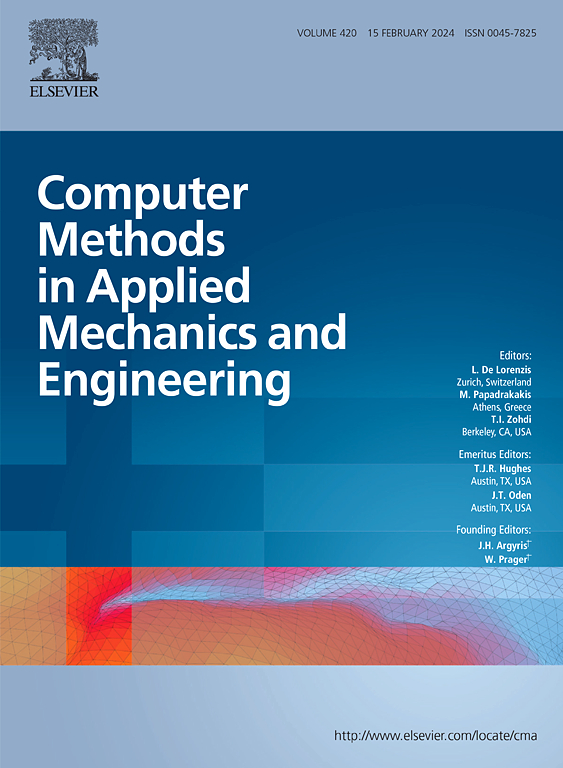Interval Isogeometric Analysis for coping with geometric uncertainty
IF 6.9
1区 工程技术
Q1 ENGINEERING, MULTIDISCIPLINARY
Computer Methods in Applied Mechanics and Engineering
Pub Date : 2025-01-30
DOI:10.1016/j.cma.2025.117773
引用次数: 0
Abstract
Geometric uncertainty poses a significant challenge in many engineering sub-disciplines ranging from structural design to manufacturing processes, often attributed to the underlying manufacturing technology and operating conditions. When combined with geometric complexity, this phenomenon can result in substantial disparities between numerical predictions and the actual behavior of mechanical systems. One of the underlying causes lies in the initial design phase, where insufficient information impedes the development of robust numerical models due to epistemic uncertainty in system dimensions. In such cases, set-based methods, like intervals, prove useful for characterizing these uncertainties by employing lower and upper bounds to define uncertain input parameters. Nevertheless, employing interval methods for treating geometric uncertainties can become computationally demanding, especially when traditional methods like finite element analysis (FEA) are utilized to represent the system. This is due to the necessity of performing iterative analyses for different realizations of geometry within the bounds of uncertain parameters, requiring the repeated execution of the meshing process and thereby escalating the numerical effort. Moreover, the process of remeshing introduces a second challenge by disrupting the continuity of the underlying optimization problem inherent in interval analysis, further complicating the computational procedure. In this work, the potential of Isogeometric Analysis (IGA) for quantifying geometric uncertainties characterized by intervals is explored. IGA utilizes the same basis functions, Non-Uniform Rational B-Splines (NURBS), employed in Computer-Aided Design (CAD) to approximate solution fields in numerical analysis. This integration enhances the accurate description of complex shapes and interfaces while maintaining geometric fidelity throughout the simulation process. The primary advantage of employing IGA for uncertainty quantification lies in its ability to control the system’s geometry through the position of control points, which define the shape of NURBS. Consequently, alterations in the model’s geometry can be achieved by varying the position of these control points, thereby bypassing the numerical costs associated with remeshing when performing uncertainty quantification considering intervals. To propagate geometric uncertainties, a gradient-based optimization (GBO) algorithm is applied to determine the lower and upper bounds of the system response. The corresponding sensitivities are computed from the IGA model with a variational approach. Two case studies involving linear systems with uncertain geometric parameters demonstrate that the proposed strategy accurately estimates uncertain stress triaxiality.
求助全文
约1分钟内获得全文
求助全文
来源期刊
CiteScore
12.70
自引率
15.30%
发文量
719
审稿时长
44 days
期刊介绍:
Computer Methods in Applied Mechanics and Engineering stands as a cornerstone in the realm of computational science and engineering. With a history spanning over five decades, the journal has been a key platform for disseminating papers on advanced mathematical modeling and numerical solutions. Interdisciplinary in nature, these contributions encompass mechanics, mathematics, computer science, and various scientific disciplines. The journal welcomes a broad range of computational methods addressing the simulation, analysis, and design of complex physical problems, making it a vital resource for researchers in the field.

 求助内容:
求助内容: 应助结果提醒方式:
应助结果提醒方式:


